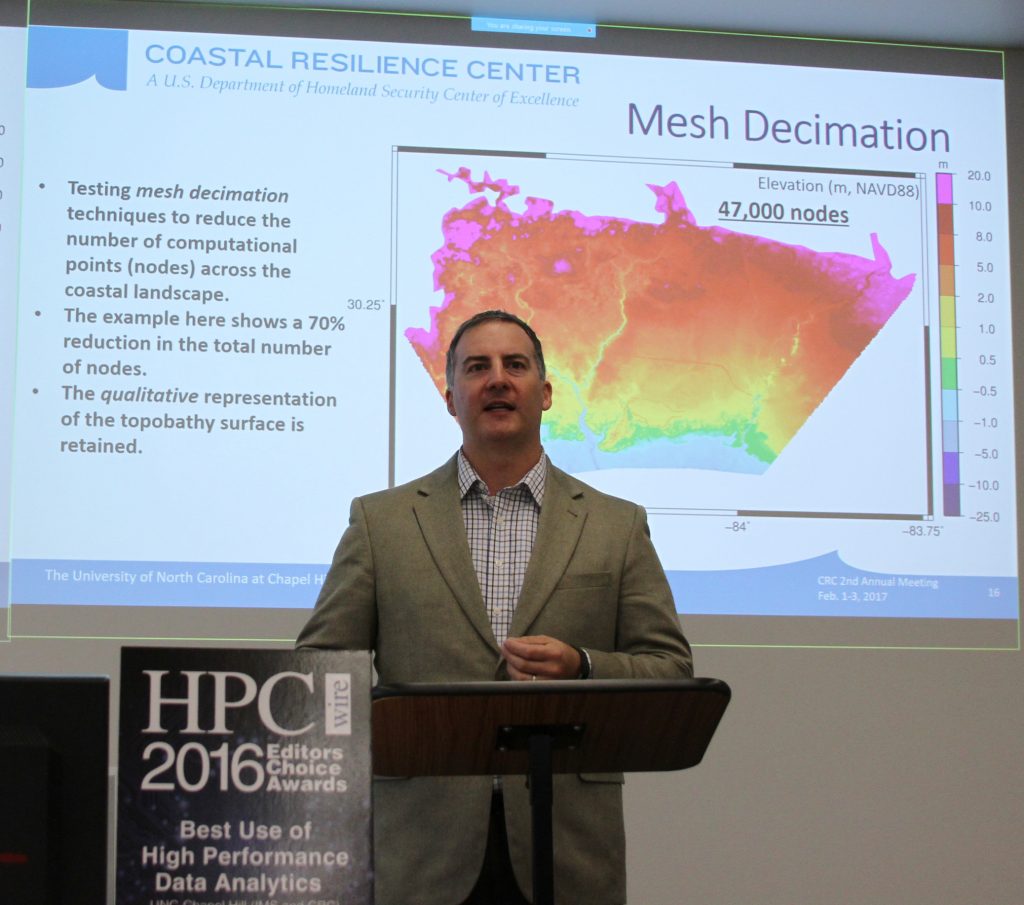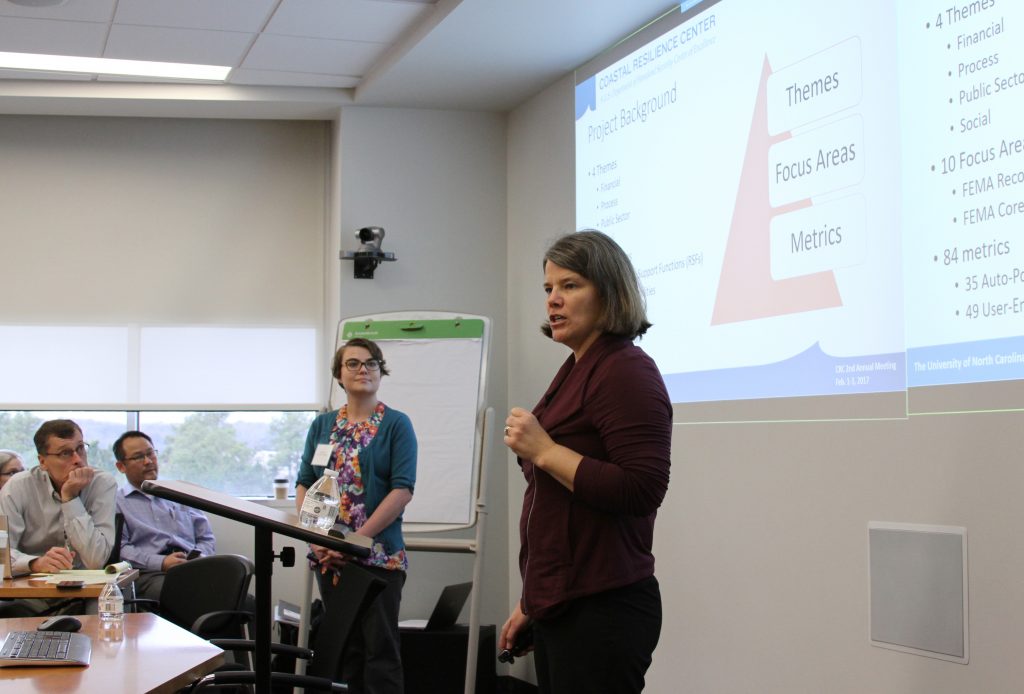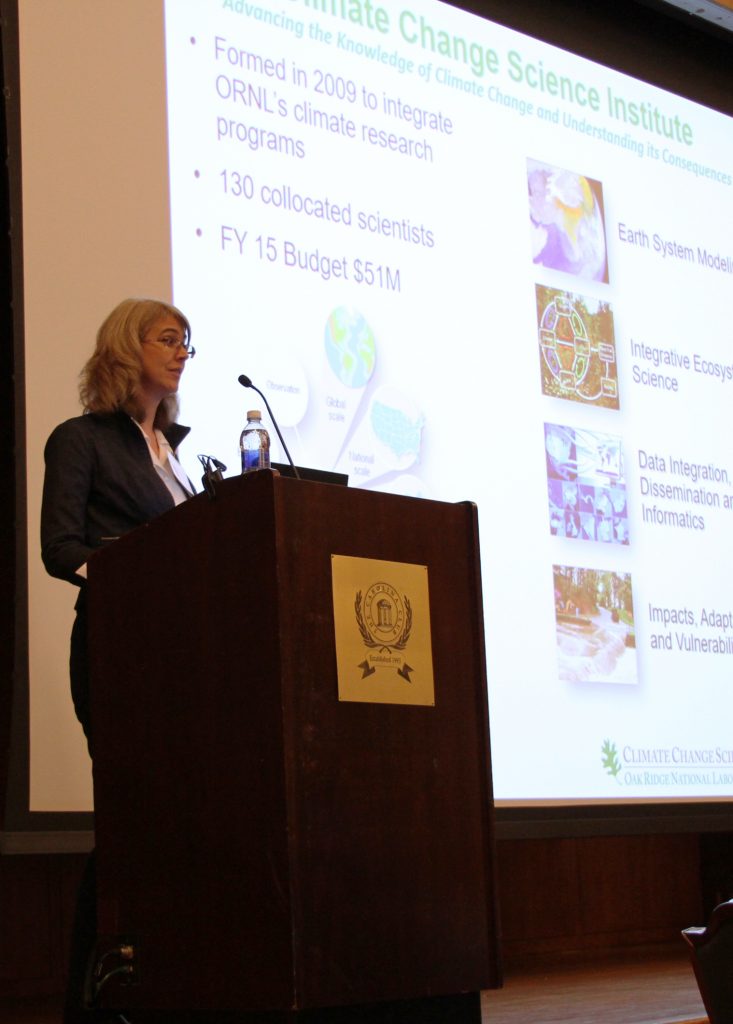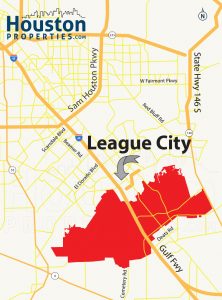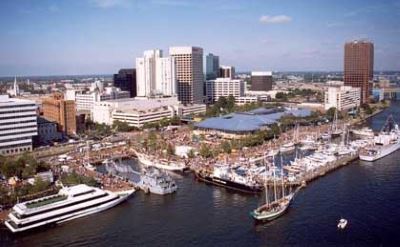
During DesignWeek in January 2017, students viewed buyout properties in Kinston that flooded during Hurricane Floyd in 1999. Photo by Darien Williams, University of North Carolina at Chapel Hill.
With many communities in the state still in the early stages of recovery from last fall’s Hurricane Matthew, students from North Carolina universities came together to assess the best ways for some of the affected communities to rebuild. In mid-January, the North Carolina State University College of Design held its first DesignWeek, in which students developed designs that could help three eastern North Carolina communities adapt to future flooding events.
About 70 students – from the University of North Carolina at Chapel Hill’s Department of City and Regional Planning (DCRP), along with those from N.C. State – worked in teams assigned to one of three rural communities: Windsor, Greenville or Kinston. Each school’s faculty, along with industry representatives and community leaders, helped students research and create designs that mitigate flood damage and improve resiliency in the towns.
Several of the students are enrolled in courses that are part of a Coastal Resilience Center of Excellence (CRC) education project at UNC-Chapel Hill.
Open space, greenway connections in Kinston
Darien Williams, a first-year graduate student in DCRP at UNC-CH and a Department of Homeland Security Science & Engineering Workforce Development Fellow with the CRC , said his Kinston team approached the challenge of DesignWeek with trepidation.
“None of us are from eastern North Carolina, only a few among us had experience there,” Williams said. “Before envisioning what we could come up with, we dedicated our time to understanding what was needed and being asked for. The first days of DesignWeek were spent simply talking, researching and organizing information: What was Kinston’s demographic makeup? What has been tried there before? What sorts of questions should we ask residents?” Continue reading

